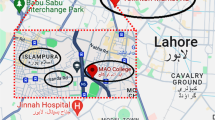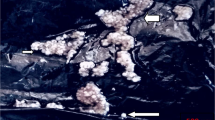Abstract
This study aimed to determine the concentrations of aluminium, cadmium, lead and nickel in edible muscle of three commercially valuable fish species (Rutilus frisii kutum, Liza aurata and Cyprinus carpio) from four fishing sites of Iranian coastal waters of the Caspian Sea during winter and summer. The samples were analyzed using graphite furnace atomic absorption spectrometry (GFAAS) after wet-ashing digestion. The results were expressed as μg/g of wet weight. The resulted range of metals in fish species was between 0.89–2.46 μg/g for aluminium, 0.03–0.17 μg/g for cadmium, 0.21–0.38 μg/g for lead and 0.12–0.52 μg/g for nickel. Seasonal variation influenced concentration of the metals in fish samples of some fishing sites. The highest concentrations found were 4.63 μg/g for aluminium in winter and 0.82 μg/g for lead in summer in Cyprinus carpio; while cadmium (0.49 μg/g) and nickel (1.14 μg/g) were the highest in Rutilus frisii kutum in winter. This demonstrates that estimated daily and weekly intakes of aluminium, lead and nickel and estimated monthly intake of cadmium via consumption of fish flesh are below the established PTDI, PTWI and PTMI values.

Similar content being viewed by others
References
Agah H, Leermakers M, Elskens M, Fatemi SMR, Baeyens W (2009) Accumulation of trace metals in the muscle and liver tissues of five fish species from the Persian Gulf. Environ Monit Assess 157:499–514
Agusa T, Kunito T, Tanabe S, Pourkazemi M, Aubrey DG (2004) Concentrations of trace elements in muscle of Sturgeons in Caspian Sea. Mar Pollut Bull 49:789–800
Anan Y, Kunito T, Tanabe S, Mitrofanov I, Aubrey DG (2005) Trace element accumulation in fishes collected from coastal waters of the Caspian Sea. Mar Pollut Bull 51:882–888
Annual Fishery Statistics (2010) Consumption of fish in Iran. Ministry of Agriculture, pp 36–40
Barton H (2008) Predicted intake of trace elements and minerals via household drinking water by 6-year-old children from Kraków, Poland. Part 3: Aluminium. Food Addit Contam 25:588–603
Burger J, Gaines KF, Boring CS, Stephens WL, Snodgrass J, Dixon C et al (2002) Metal levels in fish from the Savannah River: potential hazards to fish and other receptors. Environ Res 89:85–97
Carvalho ML, Santiago S, Nunes ML (2005) Assessment of the essential element and heavy metal content of edible fish muscle. Anal Bioanal Chem 382:426–432
Çelik U, Oehlenschläger J (2007) High contents of cadmium, lead, zinc and copper in popular fishery products sold in Turkish supermarkets. Food Control 18:258–261
Demirak A, Yilmaz F, Tuna AL, Ozdemir N (2006) Heavy metals in water, sediment and tissues of Leuciscus cephalus from a stream in southwestern Turkey. Chemosphere 63:1451–1458
Dural M, Göksu MZL, Özak AA (2007) Investigation of heavy metal levels in economically important fish species captured from the Tuzla lagoon. Food Chem 102:415–421
EC (2006) Commission Regulation (EC) No 1881/2006 of 19 December 2006 setting maximum levels for certain contaminants in foodstuffs. Off J Eur Union L364:5–24
Erkan N, Özden Ö, Ulusoy Ş, (2010) Seasonal micro- and macro-mineral profile and proximate composition of oyster (Ostrea edulis) analyzed by ICP-MS. Food Anal Methods. doi:10.1007/s12161-010-9128-6
Ersoy B, Çelik M (2009) Essential elements and contaminants in tissues of commercial pelagic fish from the Eastern Mediterranean Sea. J Sci Food Agric 89:1615–1621
EVM (Expert Group on Vitamins and Minerals) (2003) Risk assessment: nickel
European Food Safety Authority (2008) Safety of aluminium from dietary intake. Scientific opinion of the panel on food additives, flavourings, processing aids and food contact materials (AFC). EFSA J 754:1–34. http://archive.food.gov.uk/dept_health/pdf/evmpdf/evm9924.pdf. Accessed 18 Sep 2009
FAO/WHO (2004) Summary of Evaluations Performed by the Joint FAO/WHO Expert Committee on Food Additives (JECFA 1956–2003), (First Through Sixty First Meetings). ILSI Press International Life Sciences Institute
FAO/WHO (2010) Joint FAO/WHO Expert Committee on Food Additives. Summary report of the seventy-third meeting of JECFA in the WHO Technical Report Series, Geneva, Switzerland, pp 12–13
FDA (1993) Guidance document for arsenic in shellfish. DHHS/PHS/FDA/CFSAN/Office of Seafood, Washington, DC
Jureša D, Blanuša M (2003) Mercury, arsenic, lead and cadmium in fish and shellfish from the Adriatic Sea. Food Addit Contam 20:241–246
Kaya Y, Turan H (2010) Comparison of protein, lipid and fatty acids composition of anchovy (Engraulis encrasicolus L. 1758) during the commercial catching season. J Muscle Foods 21:474–483
Kris-Etherton PM, Harris WS, Appel LJ (2002) Fish consumption, fish oil, omega-3 fatty acids, and cardiovascular disease. Circulation 106:2747–2757
Liu ZP (2003) Lead poisoning combined with cadmium in sheep and horses in the vicinity of non-ferrous metal smelters. Sci Total Environ 309:117–126
Mendil D, Ünal ÖF, Tuzen M, Soylak M (2010) Determination of trace metals in different fish species and sediments from River Yeşilırmak in Tokat, Turkey. Food Chem Toxicol 48:1383–1392
Mora S, Sheikoleslami MR, Wyse E, Azemard S, Cassi R (2004) An assessment of metal contamination in coastal sediments of the Caspian Sea. Mar Pollut Bull 48:61–77
Müller M, Anke M, Illing-Günther H (1998) Aluminium in foodstuffs. Food Chem 61:419–428
Özden Ö, Ulusoy Ş, Erkan N (2010) Study on the trace metal and macro minerals in Mytilus galloprovincialis as a bioindicator species: the case of Marmara Sea, Turkey. J Verbr Lebensm 5:407–412
Öztürk M, Özözen G, Minareci O, Minareci E (2009) Determination of heavy metals in fish, water and sediments of Avsar Dam Lake in Turkey. Iran J Environ Health Sci Eng 6:73–80
Polat A, Kuzu S, Özyurt G, Tokur B (2009) Fatty acid composition of red mullet (Mullus barbatus): a seasonal differentiation. J Muscle Foods 20:70–78
Ranau R, Oehlenschläger J, Steinhart H (2001) Aluminium content in edible parts of seafood. Eur Food Res Technol 212:431–438
Reilly C (2002) Metal contamination of food, 3rd edn. Blackwell Science Ltd, Axford, UK, pp 115–124
Saei-Dehkordi SS, Fallah AA, Nematollahi A (2010) Arsenic and mercury in commercially valuable fish species from the Persian Gulf: influence of season and habitat. Food Chem Toxicol 48:2945–2950
Sharif AKM, Mustafa AI, Amin MN, Safiullah S (1993) Trace element concentrations in tropical fish from the Bay of Bengal. Sci Total Environ 138:223–234
Uluozlu OD, Tuzen M, Mendil D, Soylak M (2009) Assessment of trace element contents of chicken products from Turkey. J Hazard Mater 163:982–987
WHO (1993) Guidelines for drinking water, 2nd edn. Chemical aspects. WHO, Geneva. http://www.who.int/water-_sanitation_health/dwq/gdwq2v1/en/. Accessed 30 Aug 2008
Yilmaz AB, Yilmaz L (2007) Influence of sex and season on levels of heavy metals in tissues of green tiger shrimp (Penaeus semisulcatus de Hann, 1844). Food Chem 101:1664–1669
Yilmaz AB, Sangün MK, Yağlioğlu D, Turan C (2010) Metals (major, essential to non-essential) composition of the different tissues of three demersal fish species from İskenderun Bay, Turkey. Food Chem 123:410–415
Zeynali F, Tajik H, Asri-Rezaie S, Meshkini S, Fallah AA, Rahnama M (2009) Determination of copper, zinc and iron levels in edible muscle of three commercial fish species from Iranian coastal waters of the Caspian Sea. J Anim Vet Adv 8:1285–1288
Acknowledgments
A special thank goes to Mr. Aman A. Jafari for his help in editing the manuscript. This study was financially supported by Urmia University.
Author information
Authors and Affiliations
Corresponding author
Rights and permissions
About this article
Cite this article
Fallah, A.A., Zeynali, F., Saei-Dehkordi, S.S. et al. Seasonal bioaccumulation of toxic trace elements in economically important fish species from the Caspian Sea using GFAAS. J. Verbr. Lebensm. 6, 367–374 (2011). https://doi.org/10.1007/s00003-011-0666-7
Received:
Accepted:
Published:
Issue Date:
DOI: https://doi.org/10.1007/s00003-011-0666-7




